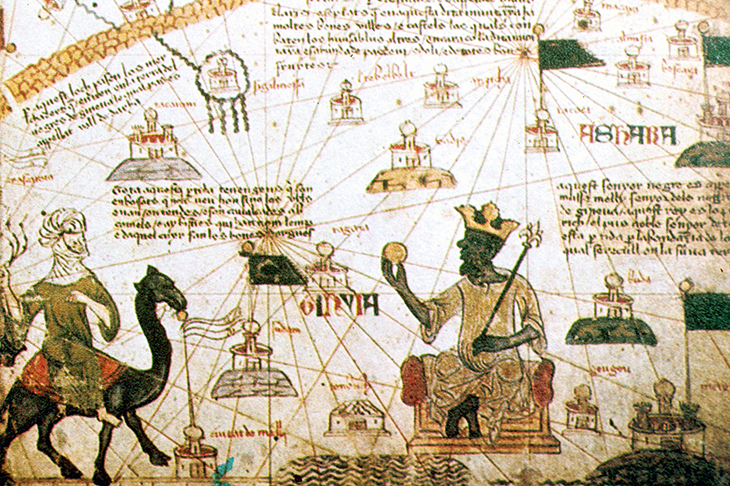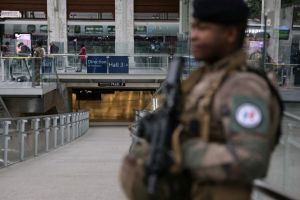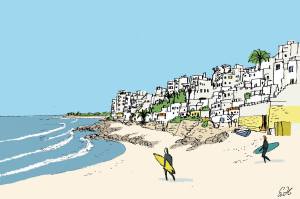The main attraction in the Kenyan port of Mombasa is Fort Jesus, a vast, ochre-colored bastion overlooking the Indian Ocean. Dominating a dusty skyline of palm trees, minarets and tower blocks, it was erected during the opening cannonade of European empire. In 1505 a Portuguese armada sacked and torched Mombasa, shortly after its ‘discovery’ by Vasco da Gama. The fort stamped the city as theirs.
The coming of the Portuguese is sometimes considered the beginning of African history — a story not about Africa itself, but about bemused Europeans exploring and taming a ‘dark’ continent. And if we look at Africa before 1505, we find a world as blank as one of da Gama’s maps. This has led many to believe, as G.W.F. Hegel did in the 1830s, that Africa ‘is no historical part of the world’.
In The Golden Rhinoceros, the French historian François-Xavier Fauvelle turns the tables. He places the arrival of the Portuguese at the end of the story, as a rude interruption of what was in fact a golden age of African civilization. But even if Fort Jesus and other imperial relics linger on, little remains today to show what had made the Portuguese covet Mombasa so much in the first place. Long vanished are the palaces and mosques built entirely of coral which attracted merchants from across the Indian Ocean, swapping Persian spices, Venetian glass and Chinese porcelain for the gold and slaves which mysteriously arrived from the continent’s interior.
Mombasa was itself a dot in a network of booming coastal cities created by the Swahili, a people whose culture was a unique blend of Arabic and African that had developed over centuries. The ruins of more than 170 of their settlements have been uncovered so far, stretching from Somalia to Mozambique. The forgotten shells of some of these prosperous, powerful cities,now swamped by dense jungle, occasionally peep through the trees at the sea they once ruled.
The Golden Rhinoceros is bursting with new worlds from Africa’s medieval past — a time when merchants began connecting a patchwork of ancient kingdoms, stretching from modern-day Morocco to South Africa, into wider networks of power, wealth, religion, goods and ideas. Fauvelle has created a collage of the continent from 34 different sources, each relating to trade and eloquently discussed in brief chapters. They are dots of light which, when combined, illuminate whole swathes of the dark continent, ranging from the coming of Islam in the western Sahara in the 7th century, to the 4,000 gold mines pockmarked across 14th-century Zimbabwe.
These stretches through time and space can leave the reader panting to keep up; and the absence of maps to pinpoint obscure settlements, such as Aoudaghost or Sijilmasa, only makes the uninitiated feel further lost. But perseverance is rewarded. We learn of an entire cathedral found buried beneath a sand dune in the Nubian desert, complete with vaulting and intricate murals of long-lost kings. Taghaza in northern Mali was a town made out of salt — not only through its booming trade in the mineral with sub-Saharan Africa, but because this was also the only building material to hand. A ruler of Mali set out with 2,000 ships to discover ‘the furthest limit of the Atlantic Ocean’ 180 years before Columbus. Such tales make it embarrassingly clear that Africa has a lot more to offer than safaris.
Fauvelle’s newly translated work covers an aspect of history much in need of investigation and publicity. The two large bookcases representing African history at Waterstone’s flagship store in Piccadilly currently contain only a couple of works for this 900-year period, buried among contemporary politics, empire and Mandela.
Inevitably, the great challenge of early African history is lack of source material. Many cultures relied on oral tradition, whose reliability is constantly in question. The palaces and tombs found in the kingdom of Buganda were built of grass, a material as fragile as an autumn leaf. Vast distances, forbidding climates and political instability have made expeditions hazardous, if not impossible. A French archaeologist once spent ten days traveling across the Sahara, hoping to find the abandoned cargo of a 13th-century camel train, to be left with only enough water for six hours’ work before having to head back on his return journey. He never found the site again.
Consequently, Fauvette’s sources are a collection of traces and fragments — well-placed stepping stones winding across what is still a boundless void of knowledge. So much remains unknown, and possibly always will. But the mysterious ruins of once rich and powerful kingdoms, spanning centuries, are still sometimes briefly sighted by passing travelers. The capitals of West Africa’s greatest empires, Mali and Ghana (whose king tethered his horse to a nugget of gold the size of a boulder), are waiting to be found somewhere beneath the Sahara’s shifting sands. Fauvelle gives us tantalizing glimpses of what remains an undiscovered continent, ruled by the spirit of Ozymandias.
This article was originally published in The Spectator magazine.


















